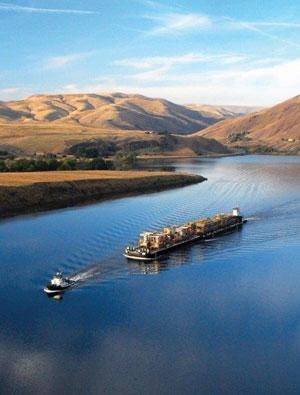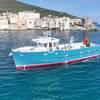Waterways Are the Greenest Way to Go
- Barge transportation of commodities on our nation’s waterways is the greenest way to move bulk freight. In 2014, 604 million tons of cargo valued at $232 billion moved on the inland waterways system with the lowest environmental impact among surface transportation modes.
- Towboats can push many barges loaded with freight (grain, soybeans, chemicals, petroleum, salt, sand, timber, rocks, and more) at one time. A standard inland river tow of one towboat pushing 15 barges moves as much cargo as 1,050 semi-trucks, or six locomotives pulling 216 rail cars.
- Moving cargoes by barge produces little noise or air pollution as vessels glide silently through the water, away from shorelines.
- Modern trucks can move a ton of cargo 150 miles for each gallon of fuel burned. Newer locomotives can move that cargo 478 ton-miles per gallon, but barges, pushed by towboats, can move it 616 ton-miles per gallon.
- Our inland waterways are a critical solution to the nation's transportation challenges today and into the future. Waterways transportation is the most cost-competitive, fuel-efficient, congestion relieving mode that also offers the lowest carbon footprint.
Waterways are simply the greenest way to go.













